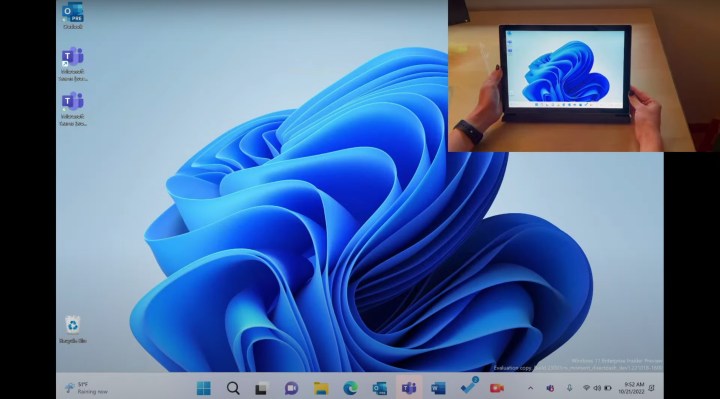Microsoft has given us a glimpse of a feature that “Moment 2” may bring as early as January 2023.
Since Windows 11 version 22H2, the Redmond, WA company has dedicated to releasing smaller feature updates, known internally as “Moment.” The first one gave us the much-requested tabs in File Explorer (along with its Context IQ tech). The next Windows 11 version 22H2 “Moment” is currently slated for early 2023, according to sources, after it undergoes testing throughout 2022.

As spotted by Windows Latest, in a recent Windows Insider webcast on YouTube, the presenters accidentally demoed a Windows 11 preview build — 23003.ni_moment_directdash_dev1.221018-160 — with a deeper touch-optimized taskbar for tablets. This build seems to point to “Moment 2” of this build of
The full “Moment 2” changelog is not yet known, but in the webcast, Windows Insider viewers at least got a glimpse of how the tablet-specific taskbar looks and animates. Of course, many of them might have already been testing this feature as part of the Windows Insider program, the company’s public testing sandbox.
Do bear in mind that Microsoft intends on shipping Build 23003 in the form of a cumulative update from either Build 22621 or 22622 to Build 22623. If that sounds confusing, it’s because “Moment 2” is not a new OS version, but an update to the current 22H2 version instead. Also note that these new “Moment” features won’t be shipping with Windows 11 version 22H2, which doesn’t provide users with a clear timeline of when these features might arrive.
Microsoft is apparently aware of these confusing announcements and has promised to provide details in updated documentation.
Editors' Recommendations
- Scores of people are downgrading back to Windows 10
- Windows 11 might nag you about AI requirements soon
- You’re going to hate the latest change to Windows 11
- Windows 11 tips and tricks: 8 hidden settings you need to try
- My most anticipated laptop of the year just got leaked



